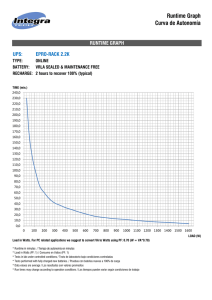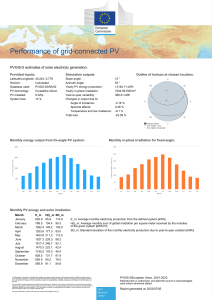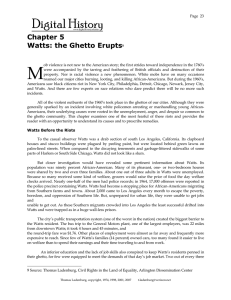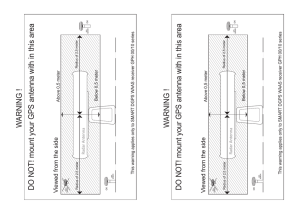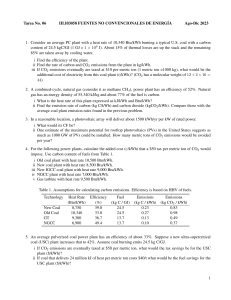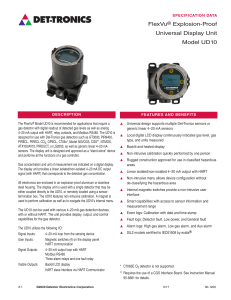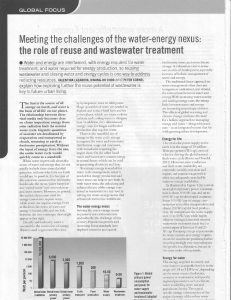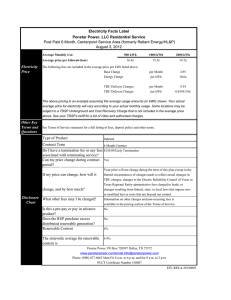your bill: demand and energy charges
Anuncio
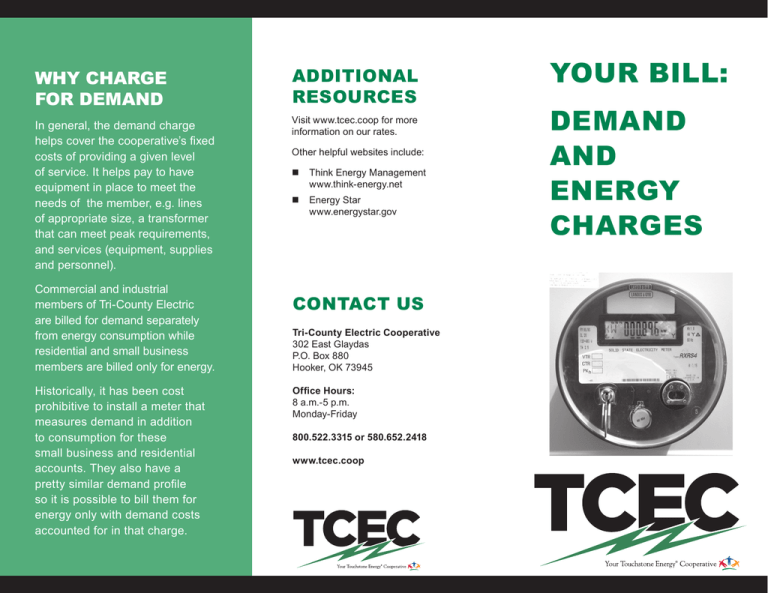
WHY CHARGE FOR DEMAND ADDITIONAL RESOURCES In general, the demand charge helps cover the cooperative’s fixed costs of providing a given level of service. It helps pay to have equipment in place to meet the needs of the member, e.g. lines of appropriate size, a transformer that can meet peak requirements, and services (equipment, supplies and personnel). Visit www.tcec.coop for more information on our rates. Commercial and industrial members of Tri-County Electric are billed for demand separately from energy consumption while residential and small business members are billed only for energy. Historically, it has been cost prohibitive to install a meter that measures demand in addition to consumption for these small business and residential accounts. They also have a pretty similar demand profile so it is possible to bill them for energy only with demand costs accounted for in that charge. Other helpful websites include: n Think Energy Management www.think-energy.net n Energy Star www.energystar.gov CONTACT US Tri-County Electric Cooperative 302 East Glaydas P.O. Box 880 Hooker, OK 73945 Office Hours: 8 a.m.-5 p.m. Monday-Friday 800.522.3315 or 580.652.2418 www.tcec.coop YOUR BILL: DEMAND AND ENERGY CHARGES DEMAND DEFINED WATER EXAMPLE OF DEMAND Electric demand refers to the maximum amount of electrical power that is being consumed at a given time, as opposed to energy which is the amount of power used over a period of time. Suppose you want to fill a five gallon bucket with water. If you use an inexpensive hose connection to your sink providing 1 gallon per minute to do it, and it will take five minutes. For example, a typical hand iron requires, or demands, 1,000 watts or 1 kilowatt (1 kW) of power. If that iron is used for one hour it consumes 1,000 watt-hours or 1 kilowatt-hour (1 kWh) of energy. Using multiple appliances at the same time increases your demand. A typical dishwasher has a demand of 1,200 watts. If you used the dishwasher at the same time as the hand iron, the total demand for these two appliances would be 1,000 watts plus 1,200 watts or 2,200 watts. If operated at separate times, the maximum demand for these two appliances would be 1,200 watts. Or you can get to a more expensive large faucet that provides 5 gallons per minute, it will fill in just one minute. The flow rate (gallons per minute) is equivalent to demand, and the five gallons of water are equivalent to consumption. Filling both buckets has the same “consumption” but very different “demands.” The same is true of electricity. While you may be able to accomplish the same thing by operating a small wattage appliance for many hours as operating something of higher wattage for just a few, the higher wattage piece of equipment will create a higher demand on the utility. Using our analogy, you are asking for a larger pipe, and that costs more. If time is of the essence, it might be worth having the more expensive high flow rate or wattage. This is why utilities often charge some customers for both demand and consumption. A customer that sets a high demand requires more services from the utility — additional generating plant capacity, and more expense in lines, transformers and substation equipment. Demand is billed in kilowatts (kW) and measures the rate at which energy is used. Energy is billed in kilowatt-hours (kWh) and measures the amount of energy consumed. kWh kW Energy as shown on a meter Demand as shown on a meter Source: Think Energy Management, http://www.think-energy.net/KWvsKWH.htm
